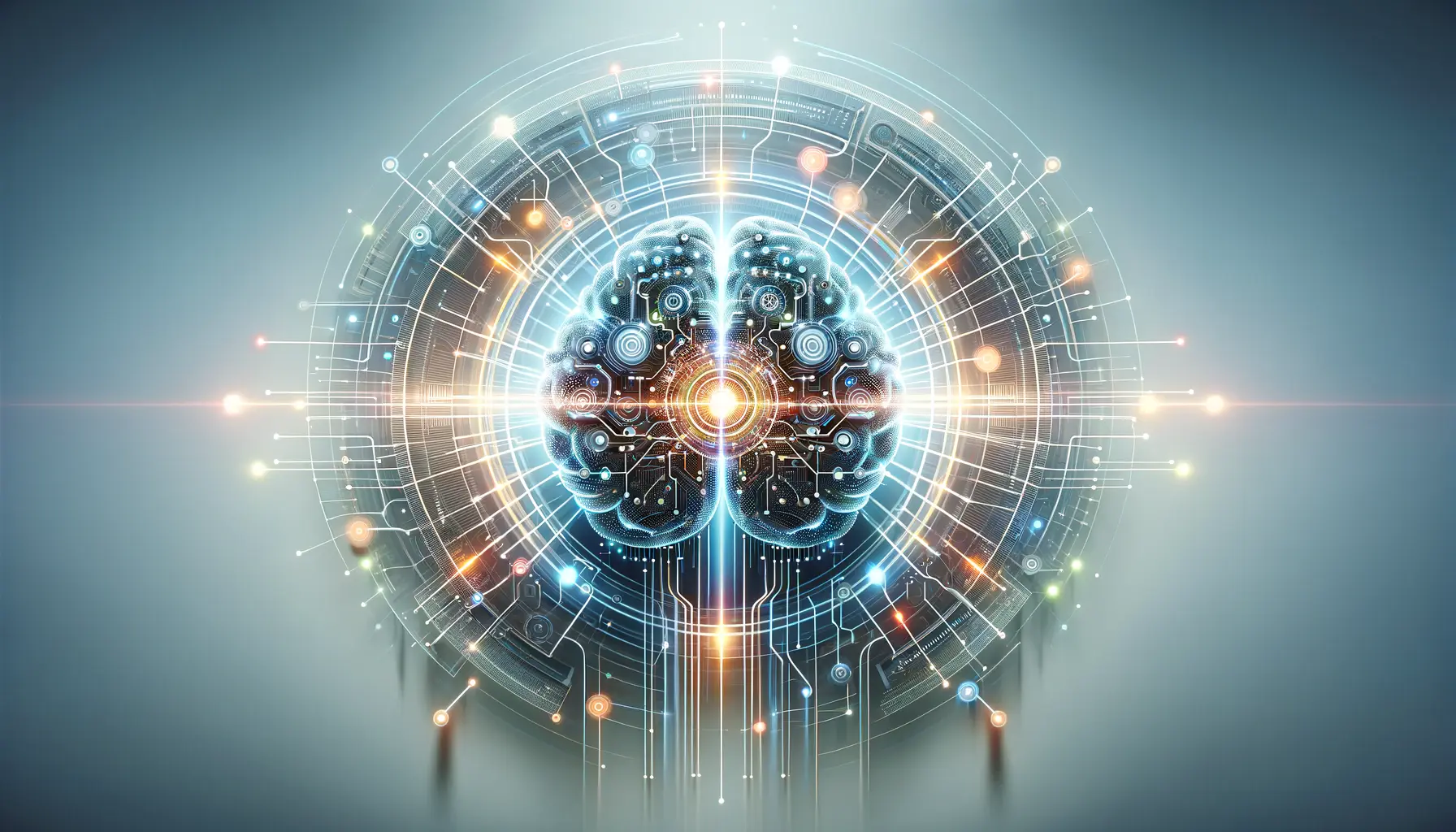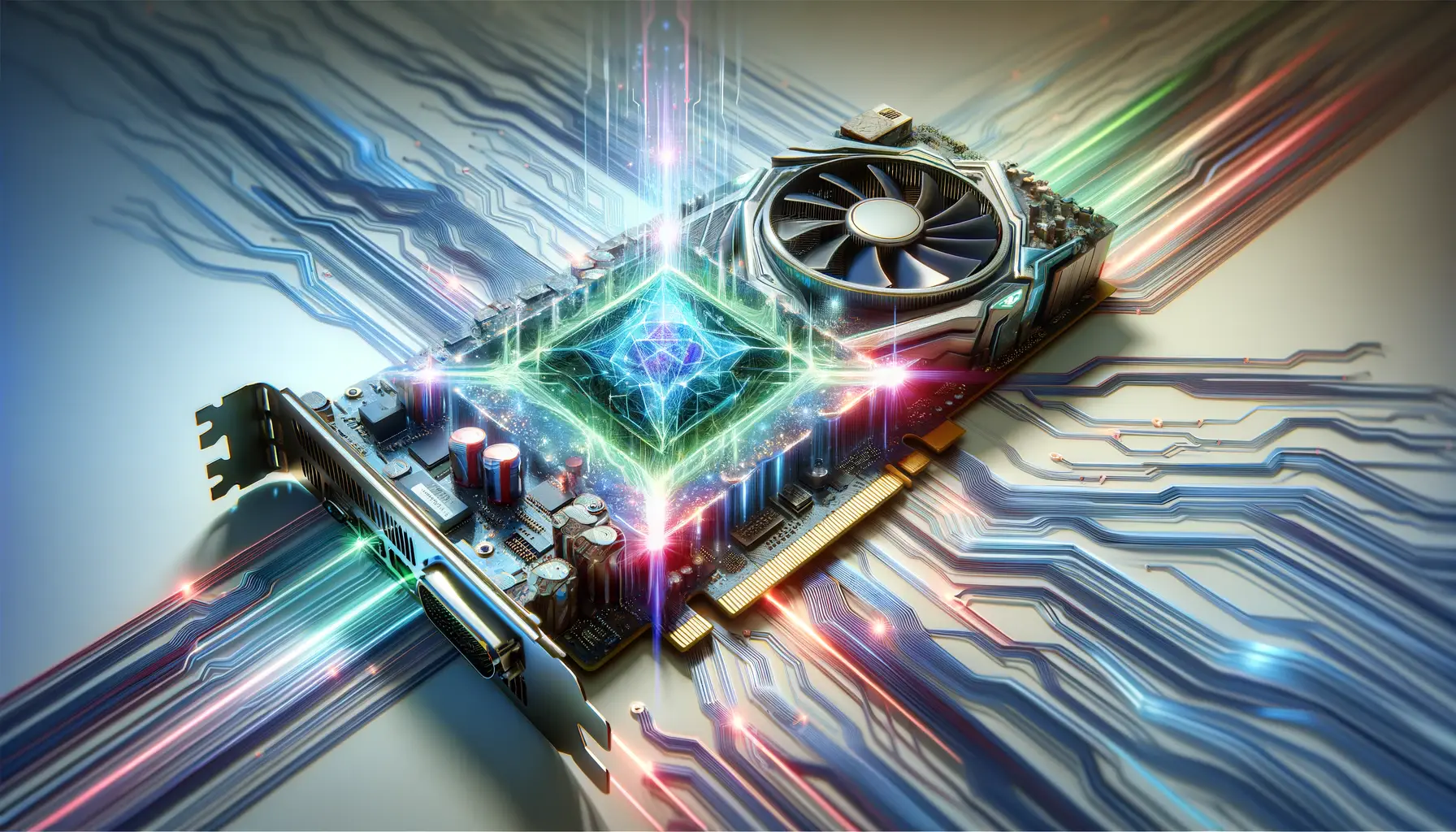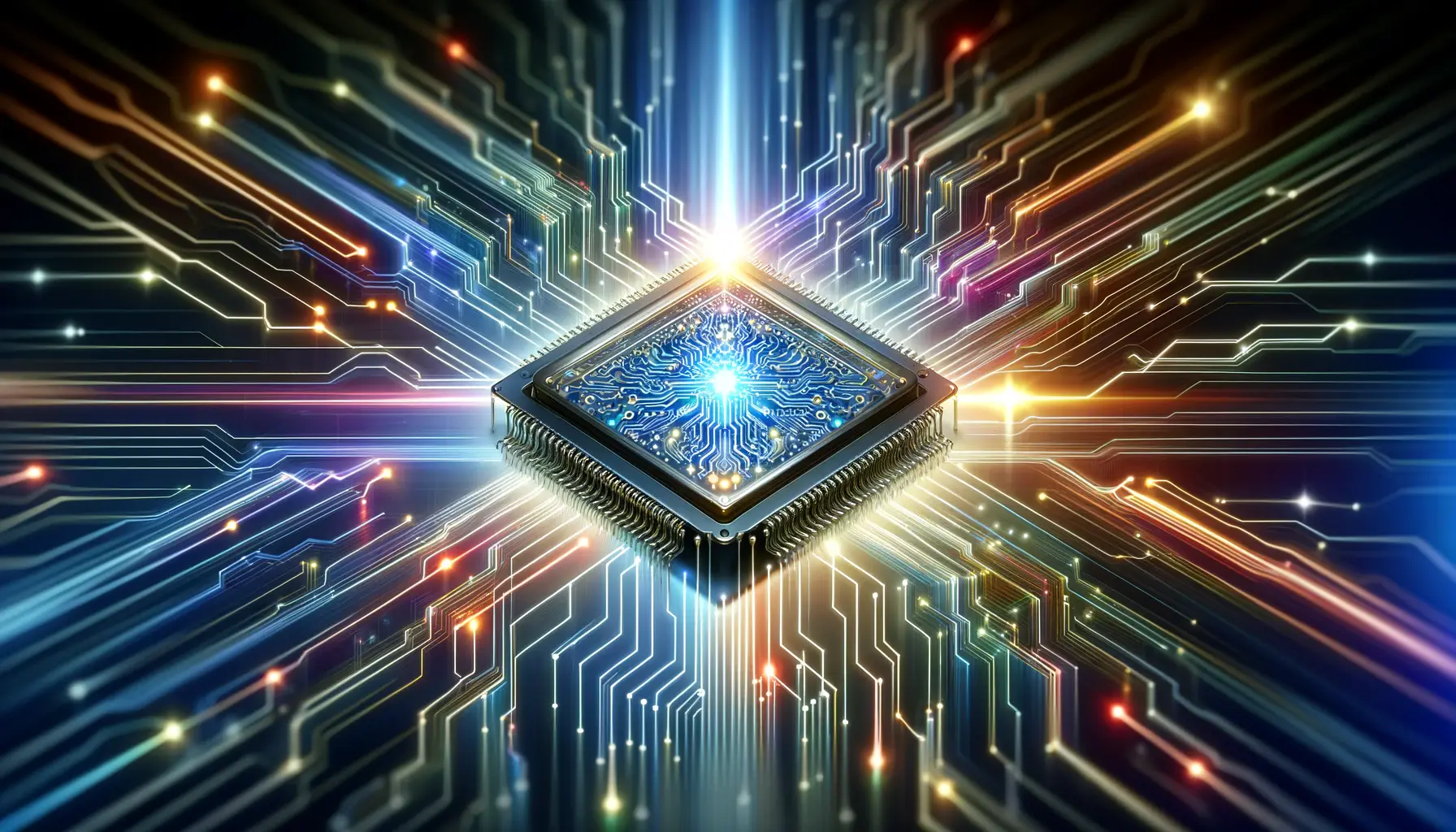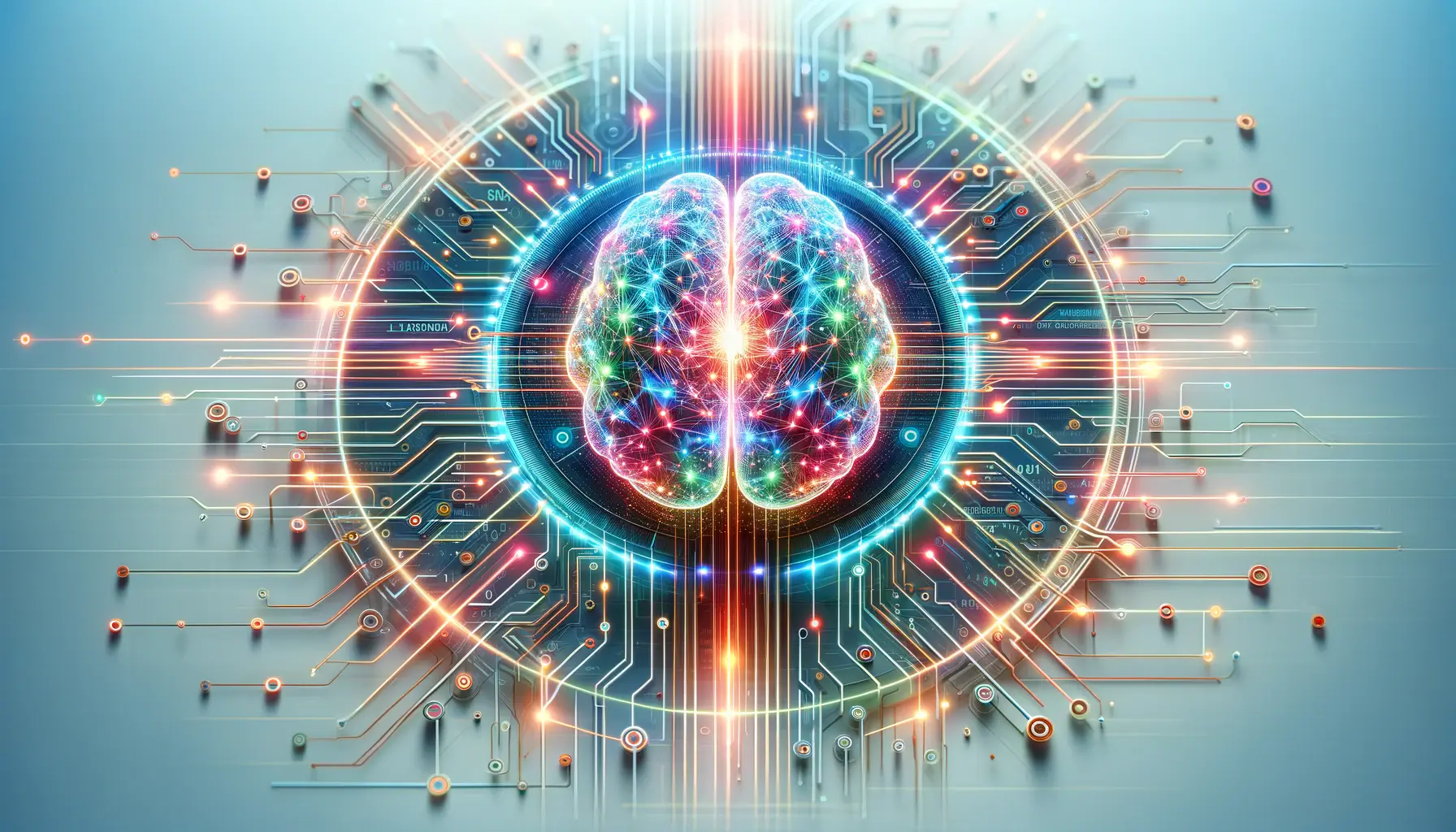The realm of artificial intelligence is witnessing an unprecedented evolution, with OpenAI’s Sora at the forefront of this transformative journey.
As a beacon of innovation, Sora encapsulates the future of AI-driven video generation, promising to redefine the boundaries of creativity, efficiency, and realism in digital content creation.
This exploration into the future developments of Sora is not just about forecasting the next technological leap; it’s about understanding the profound impact it will have on various sectors, from entertainment and education to marketing and beyond.
At its core, Sora represents a significant leap forward in the AI landscape, offering a glimpse into a future where the creation of video content is not only democratized but also elevated to new heights of artistic and technical excellence.
The anticipation surrounding Sora’s advancements is palpable, as it promises to unlock new possibilities for creators and innovators across the globe.
With its cutting-edge capabilities, Sora is poised to become a pivotal tool in the arsenal of those looking to push the envelope of what’s possible in video production and AI-driven content generation.
Sora’s Capabilities
Revolutionizing Video Generation
At the heart of Sora’s innovation is its ability to transform textual descriptions into high-fidelity video content.
This groundbreaking approach to video generation leverages advanced AI algorithms to interpret and visualize complex narratives, turning simple text prompts into rich, dynamic scenes.
The implications of this technology are vast, offering a new paradigm for content creation that is both accessible and highly customizable.
The power of Sora lies in its deep understanding of language and visual storytelling.
By analyzing text inputs, Sora can create videos that are not only visually stunning but also contextually accurate.
This capability opens up a world of opportunities for storytelling, allowing creators to bring their visions to life with unprecedented ease and flexibility.
Whether it’s for educational purposes, entertainment, or marketing, Sora’s technology is set to revolutionize the way we think about and produce video content.
Sora’s advanced AI algorithms are a game-changer in the digital content creation landscape, offering new levels of creativity and efficiency.
Enhancing Creative Expression
Sora’s development is not just a technical achievement; it’s a catalyst for creative expression.
By removing the traditional barriers to video production, such as the need for expensive equipment or specialized skills, Sora empowers individuals and organizations to express their ideas and stories in new and impactful ways.
This democratization of video creation has the potential to unleash a wave of innovation and diversity in content that was previously unimaginable.
Moreover, Sora’s ability to generate content rapidly and on-demand aligns perfectly with the fast-paced nature of today’s digital world.
Content creators can iterate quickly, experimenting with different narratives and visual styles without the constraints of time and resources.
This agility is invaluable in a landscape where the ability to capture and retain audience attention is paramount.
Impact on Various Industries
The advent of Sora is set to have a transformative impact across a multitude of industries, reshaping how content is created, consumed, and valued.
From the entertainment sector to education, and even in corporate marketing, the ripple effects of this technology will be profound and far-reaching.
By enabling the creation of high-quality video content with minimal input, Sora is not just changing the game; it’s creating an entirely new playing field.
Let’s delve into the specific industries that stand to benefit significantly from Sora’s capabilities:
- Entertainment and Media: In an industry where storytelling is king, Sora’s ability to quickly bring stories to life will revolutionize film and video production, opening up new avenues for independent filmmakers and content creators.
- Education: Educational content can be made more engaging and accessible, with complex concepts visualized through detailed video explanations, thereby enhancing learning experiences and outcomes.
- Marketing and Advertising: Marketers can leverage Sora to create compelling video campaigns at a fraction of the current cost and time, allowing for more dynamic and personalized advertising strategies.
Revolutionizing Film and Video Production
The entertainment industry, particularly film and video production, is poised for a significant transformation with Sora.
Independent filmmakers, who previously faced budgetary and logistical constraints, can now produce cinematic-quality videos without the need for extensive resources.
This democratization of film production opens the door to a surge in creativity and diversity, as more creators can share their stories with the world.
Furthermore, the traditional production pipeline, known for its time-consuming and costly processes, can be streamlined with Sora.
From pre-visualization to final edits, Sora’s capabilities allow for rapid prototyping and iteration, reducing the time from concept to screen and enabling a more agile production workflow.
Enhancing Educational Content
In the realm of education, Sora’s impact cannot be overstated.
By transforming textual educational material into engaging video content, educators can capture the attention of students in ways previously not possible.
Complex subjects can be made accessible and enjoyable, catering to various learning styles and needs.
This shift towards visual learning tools has the potential to revolutionize classrooms and online learning platforms alike, making education more interactive and effective.
With Sora, the future of education is one where learning is not just informative but also immersive and engaging.
Sora’s influence extends beyond mere content creation; it heralds a new era of interactive and immersive experiences across industries.
Challenges and Ethical Considerations
While the potential of Sora to revolutionize video content creation is immense, it also brings forth a set of challenges and ethical considerations that must be addressed.
As with any groundbreaking technology, the implications of its use extend beyond the immediate benefits, touching upon issues of privacy, authenticity, and the potential for misuse.
Understanding and navigating these challenges is crucial for ensuring that Sora’s impact is both positive and sustainable.
Key challenges and ethical considerations include:
- Data Privacy and Security: The generation of videos based on textual prompts raises questions about the data used for training the AI models, including how it’s sourced and the consent mechanisms in place.
- Authenticity and Misinformation: The ability to create realistic video content from simple text inputs opens the door to potential misuse, such as the creation of deepfakes or misleading content.
- Intellectual Property Rights: As Sora enables the creation of content that could closely mimic existing works, issues surrounding copyright and intellectual property rights come to the forefront.
Addressing Data Privacy and Security
The issue of data privacy and security is paramount in the deployment of AI technologies like Sora.
Ensuring that the data used for training these models is ethically sourced and that users’ privacy is protected requires robust data governance policies.
Moreover, transparency about the data collection and model training processes can help build trust with users and stakeholders.
Implementing stringent security measures to protect the data and the generated content from unauthorized access is also crucial.
As Sora evolves, so too must the strategies for safeguarding the data it relies upon and generates.
Combating Authenticity and Misinformation
The potential for Sora to be used in creating deepfakes or propagating misinformation is a significant concern.
To mitigate these risks, OpenAI and other stakeholders must invest in developing detection technologies that can distinguish AI-generated content from real footage.
Educating the public about the capabilities and limitations of AI-generated videos is also essential for fostering a discerning audience that can critically evaluate the authenticity of digital content.
Furthermore, embedding digital watermarks or metadata into AI-generated videos could help trace their origins, providing a layer of accountability and aiding in the identification of misleading content.
Respecting Intellectual Property Rights
Navigating the complex landscape of intellectual property rights in the age of AI-generated content requires careful consideration and proactive measures.
Establishing clear guidelines on the use of AI to create content that may resemble existing copyrighted works is essential.
Collaboration between AI developers, copyright holders, and legal experts can lead to frameworks that respect creators’ rights while fostering innovation.
As Sora continues to develop, its creators must engage in ongoing dialogue with the broader community to address these ethical challenges, ensuring that the technology enriches the digital content landscape without compromising ethical standards.
Ethical considerations are integral to the responsible development and deployment of AI technologies like Sora, ensuring they serve the greater good while minimizing potential harms.
Technological Advancements Behind Sora
The technological foundation of Sora is a testament to the rapid advancements in the field of artificial intelligence and machine learning.
At its core, Sora leverages a sophisticated blend of AI techniques to interpret text prompts and generate corresponding video content.
This section delves into the key technological pillars that enable Sora’s capabilities, highlighting the innovation and complexity involved in its development.
Understanding the technological advancements behind Sora involves exploring:
- Natural Language Processing (NLP) for accurate interpretation of text prompts.
- Generative Adversarial Networks (GANs) and their role in creating realistic video content.
- Deep learning algorithms for video synthesis and the challenges of temporal coherence.
Natural Language Processing (NLP)
Natural Language Processing stands at the forefront of Sora’s ability to understand and process textual descriptions.
By employing advanced NLP techniques, Sora can dissect complex sentences, identify key elements, and translate these into visual narratives.
This involves not just the literal interpretation of words but also grasping the context, tone, and subtleties of the language used, ensuring that the generated videos align closely with the creator’s intent.
The continuous evolution of NLP models, driven by larger datasets and more powerful computational resources, has significantly enhanced their understanding capabilities.
This progress is crucial for Sora, enabling it to handle a wide range of prompts, from simple descriptions to intricate storylines, with remarkable accuracy.
Generative Adversarial Networks (GANs)
Generative Adversarial Networks have revolutionized the field of AI-generated content, and Sora utilizes this technology to produce realistic and dynamic video sequences.
GANs work by pitting two neural networks against each other: one generates content (the generator), while the other evaluates its authenticity (the discriminator).
Through this adversarial process, the generator learns to create increasingly realistic videos that can fool the discriminator into thinking they are real.
This methodology is particularly effective for video generation, as it ensures that the output not only looks authentic at a single frame level but also maintains visual consistency across frames, a critical aspect of believable video content.
Deep Learning for Video Synthesis
Deep learning algorithms are the backbone of Sora’s video synthesis capabilities, enabling the model to construct videos from textual descriptions.
These algorithms analyze vast amounts of video data, learning patterns and relationships that define how objects and characters move and interact over time.
However, ensuring temporal coherence — the consistency of visual elements across consecutive frames — poses a significant challenge.
Sora addresses this by employing sophisticated models that can predict and maintain the continuity of motion and narrative elements throughout the video.
This not only enhances the realism of the generated content but also allows for the creation of longer sequences that remain coherent and engaging.
The technological advancements behind Sora, from NLP to deep learning, underscore the complexity and innovation driving its development, setting new benchmarks in AI-driven video generation.
Future Directions for Sora
The journey of Sora is far from complete.
As it stands, Sora represents a monumental leap in AI-driven video generation, but the horizon of possibilities continues to expand.
The future directions for Sora are shaped by both the technological advancements on the horizon and the evolving needs of the industries it aims to serve.
This forward-looking perspective not only anticipates the enhancements in Sora’s capabilities but also explores the broader implications for creativity, communication, and content creation in a digital-first world.
Anticipated advancements and expansions for Sora include:
- Integration with virtual and augmented reality platforms.
- Improvements in real-time video generation capabilities.
- Expansion into new industries and applications beyond entertainment and education.
Integration with Virtual and Augmented Reality
One of the most exciting prospects for Sora is its potential integration with virtual and augmented reality (VR/AR) platforms.
This convergence could revolutionize how we experience digital content, enabling users to generate immersive environments and narratives directly from textual descriptions.
Imagine stepping into a story crafted by Sora, where every detail is rendered in real-time, offering a level of interactivity and immersion previously unattainable.
Such integration would not only enhance entertainment experiences but also open new avenues for training simulations, architectural visualization, and interactive learning, blurring the lines between the digital and physical worlds.
Advancements in Real-Time Video Generation
As computational power continues to grow and algorithms become more efficient, the possibility of real-time video generation becomes increasingly tangible.
Sora’s future iterations could offer creators the ability to generate video content on the fly, responding to live inputs and changing narratives dynamically.
This capability would be a game-changer for live broadcasting, interactive storytelling, and personalized content delivery, offering unprecedented levels of engagement and customization.
Real-time video generation would also empower users to experiment with creative ideas in ways that are currently not possible, fostering a culture of innovation and experimentation in digital content creation.
Expansion into New Industries and Applications
While Sora’s impact on the entertainment and education sectors is evident, its potential applications extend far beyond these fields.
Future developments could see Sora being utilized in industries such as healthcare for patient education, in retail for creating dynamic product demonstrations, and in the public sector for visualizing data and information in accessible formats.
The adaptability of Sora’s technology means it could become an invaluable tool across a wide range of contexts, providing solutions to complex communication challenges and enhancing the way we convey and comprehend information.
The future of Sora is not just about technological advancements; it’s about reimagining the possibilities of storytelling, education, and creative expression in an increasingly digital world.
Collaborations and Community Engagement
The evolution of Sora is not just a product of technological innovation but also a result of collaborative efforts and community engagement.
As Sora continues to develop, forging partnerships and fostering a vibrant community of users and developers will be crucial for its growth and the expansion of its capabilities.
These collaborations can drive the technology forward, ensuring that it meets the diverse needs of its user base and remains at the cutting edge of AI-driven video generation.
Key areas for collaboration and community engagement include:
- Partnerships with academic institutions for research and development.
- Collaborations with creative industries to explore new applications.
- Open-source initiatives to encourage innovation and accessibility.
Academic Partnerships for R&D
Collaborating with academic institutions offers a pathway to deepen the research and development efforts behind Sora.
These partnerships can facilitate cutting-edge research, exploring new algorithms, and refining existing models to enhance Sora’s capabilities.
By tapping into the wealth of knowledge and expertise within academic circles, Sora can push the boundaries of what’s possible in AI-driven video generation, addressing complex challenges and uncovering new opportunities for innovation.
Moreover, academic collaborations can help in training the next generation of AI researchers and practitioners, equipping them with the skills and insights needed to contribute to Sora’s evolution and the broader AI landscape.
Engaging with Creative Industries
The creative industries stand to benefit significantly from Sora’s advancements, making them ideal partners for collaboration.
By working closely with filmmakers, game developers, marketers, and educators, Sora can be tailored to meet the specific needs of these sectors, enhancing its utility and impact.
These collaborations can also provide valuable feedback and insights, guiding the development of new features and ensuring that Sora remains responsive to the needs of its most active users.
Such partnerships can also lead to innovative applications of Sora, showcasing its versatility and potential to transform content creation across various domains.
Open-Source Initiatives and Community Development
Embracing open-source initiatives can accelerate Sora’s development by fostering a community of developers and users who contribute to its growth.
By making parts of Sora’s technology accessible to the public, OpenAI can encourage experimentation, innovation, and the sharing of ideas, driving the technology forward in unexpected and exciting directions.
Community engagement through forums, hackathons, and collaborative projects can also provide invaluable feedback, helping to identify bugs, improve usability, and inspire new features.
This collective approach to development ensures that Sora evolves in a way that reflects the needs and aspirations of its diverse user base.
Collaborations and community engagement are essential for harnessing the collective creativity and expertise needed to realize the full potential of Sora in reshaping the landscape of video content creation.
Enhancing User Experience and Accessibility
The success of Sora hinges not just on its technological prowess but also on its usability and accessibility.
As Sora evolves, enhancing the user experience and making the technology accessible to a broader audience will be paramount.
This focus on user experience and accessibility is essential for ensuring that the benefits of Sora can be leveraged by creators across different skill levels and backgrounds, democratizing access to advanced video generation capabilities.
Strategies for enhancing user experience and accessibility include:
- Developing intuitive interfaces that simplify the video creation process.
- Offering educational resources and tutorials to help users maximize Sora’s potential.
- Implementing feedback mechanisms to continually improve the platform based on user input.
Intuitive Interfaces and Simplified Creation Process
At the heart of enhancing user experience is the development of intuitive interfaces that streamline the video creation process.
By minimizing the complexity involved in generating videos from text, Sora can become more accessible to non-technical users, opening up the world of AI-driven content creation to a wider audience.
Simplifying the user interface without compromising on the depth of customization and control allows users to focus on creativity and storytelling, rather than navigating complicated software.
Moreover, intuitive interfaces can facilitate a smoother learning curve, enabling users to quickly become proficient with Sora, thereby encouraging wider adoption and experimentation.
Educational Resources and Community Support
To maximize the potential of Sora, providing users with comprehensive educational resources and tutorials is crucial.
These resources can help users understand the full range of Sora’s capabilities, from basic operations to advanced features, empowering them to create more sophisticated and impactful video content.
Additionally, fostering a supportive community around Sora can provide a platform for users to share tips, seek advice, and collaborate on projects, further enhancing the learning experience.
Community forums, online workshops, and user-generated content showcasing Sora’s possibilities can inspire users and help them overcome creative and technical challenges, making the journey from novice to expert more engaging and rewarding.
Feedback Mechanisms for Continuous Improvement
Implementing robust feedback mechanisms is essential for the continuous improvement of Sora.
By actively soliciting and incorporating user feedback into the development process, OpenAI can ensure that Sora evolves in a direction that meets the needs and expectations of its user base.
This iterative approach to development, grounded in user insights, can lead to enhancements in functionality, usability, and performance, making Sora more effective and enjoyable to use over time.
Feedback can also identify areas for innovation, guiding the introduction of new features and capabilities that respond to the changing landscape of digital content creation and the emerging needs of creators.
Enhancing the user experience and accessibility of Sora is key to unlocking its full potential, enabling a diverse range of creators to bring their visions to life with ease and efficiency.
Embracing the Future with Sora
The journey through the evolving landscape of Sora has unveiled a future where the boundaries between text and video, imagination and reality, are not just blurred but seamlessly integrated.
As we stand on the brink of this new era, the potential of Sora to revolutionize video content creation across various industries is both exhilarating and monumental.
The advancements in natural language processing, generative adversarial networks, and deep learning algorithms that underpin Sora’s capabilities are a testament to the strides being made in artificial intelligence.
The Path Forward
Looking ahead, the trajectory for Sora is marked by boundless possibilities and challenges that beckon a collaborative, ethical, and innovative approach.
The integration with virtual and augmented reality, advancements in real-time video generation, and expansion into new industries highlight the forward momentum of Sora.
Yet, as we navigate this path, the importance of addressing ethical considerations, enhancing user experience, and fostering community engagement remains paramount.
Key Takeaways
- The future developments of Sora promise to democratize video production, making it accessible to creators of all skill levels.
- Collaborative efforts and community engagement will be crucial in shaping Sora’s evolution, ensuring it meets the diverse needs of its users.
- Enhancing the user experience and ensuring the ethical use of Sora are essential for harnessing its full potential responsibly.
In conclusion, the future developments of Sora stand as a beacon of innovation in the AI-driven video generation space, promising to unlock new realms of creativity and storytelling.
As we embrace this future, the collective efforts of developers, creators, and users will be instrumental in realizing the full potential of Sora.
Together, we can look forward to a world where the creation of video content is not just simplified but also imbued with the power to inspire, educate, and entertain in ways we have yet to imagine.
Sora: Future Developments FAQ
Explore the most common inquiries about the future of Sora and its impact on various industries.
Sora transforms textual descriptions into high-fidelity video content, leveraging advanced AI to revolutionize digital storytelling.
By enabling creators to produce cinematic-quality videos from text, Sora democratizes film production and fosters creativity.
Yes, Sora’s ability to visualize complex concepts through video will make learning more engaging and accessible.
Key challenges include addressing data privacy, combating misinformation, and navigating intellectual property rights.
Future developments may include integration with VR/AR, offering immersive experiences and transforming content interaction.
Advancements in computational power and algorithms may soon enable Sora to generate video content in real-time.
Through developing detection technologies, embedding digital watermarks, and fostering public education on AI-generated content.
Beyond entertainment and education, Sora has potential applications in healthcare, retail, and public sector communication.











